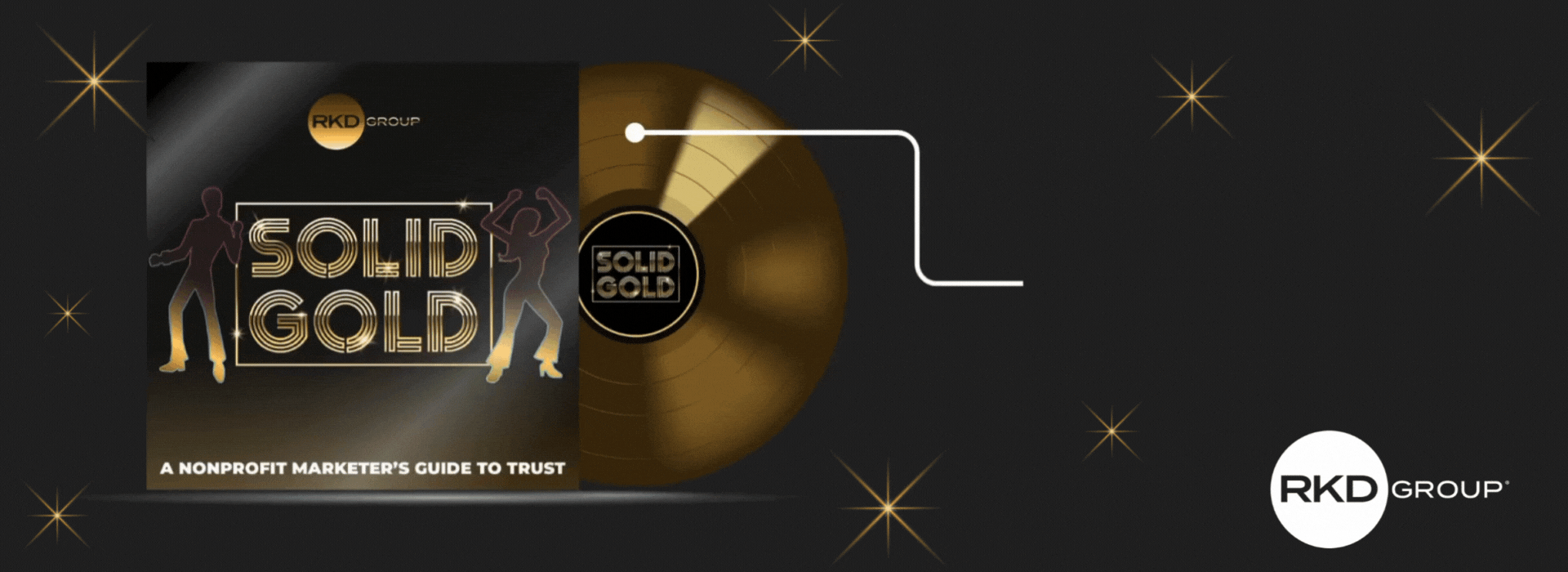 It’s been a rather confusing month as our news feeds have been filled with conflicting articles.
It’s been a rather confusing month as our news feeds have been filled with conflicting articles.
Headlines included the recession that never came and how consumers or businesses rescued America from inflation, recession and lost jobs.
Really?
Oh yeah, Americans are missing credit card payments at the highest rate in a decade, but the solid jobs report suggests that the U.S. economy perhaps doesn’t need more stimulus. And, if you really want to dive deep (not snorkel), Yahoo Finance's Chartbook was released the last of January, complete with 33 charts from some of Wall Street's top strategists.
Sam Ro at Yahoo Finance gave us 4 different ways of looking at the exact same economy, which is quite insightful of why we might be confused. It doesn’t help when we have headlines stating, Consumer spending loses steam: 'Last hurrah'.
But it’s Nathan Chappell, author of the “Generosity Crisis,” who reminds us that a scarcity mindset is hurting us in the nonprofit industry; that it’s time to innovate and increase lifetime value of our donors by building trusting relationships:
“The truth is a tough pill to swallow. No doubt that blaming the economy is easier than admitting that nonprofits are losing the war on trust, are slow to articulate true impact and in many cases, have become a barrier to generosity, rather than an amplifier of it. Something to think about. We must stop allowing the narrative of scarcity to hold us back from forging bonds with individuals that are unified by the need, desire and impact. Today is the day that we own our shortfalls and unite to envision a more charitable future - together!”
On another note, in 2023, the number of donor advised funds/IRAs/QCDs jumped drastically. We’ve seen donations in our partners’ data as low as $30 in DAF and IRAs, which is indicative of how comfortable donors are using these vehicle platforms now. Our own Executive Vice President Max Bunch has likened it to the year that online giving drastically surged ahead from prior months/years. Have you seen the same thing happen at your organization?
With that in mind, it’s time to grab your favorite beverage and have fun scanning some of what I’ve been reading in the last month.
1. 5 Trends Fundraisers Need To Watch in 2024
 Among the forces that will shape development this year: artificial intelligence, the explosion of DAFs and the culture wars.
Among the forces that will shape development this year: artificial intelligence, the explosion of DAFs and the culture wars.
- Artificial Intelligence ― Fundraisers are testing how best to integrate AI tools, so expect more learning on that front.
- Donor Advised Funds ― With the new year ahead and an uncertain economy, fundraisers are expected to encourage DAF account holders to make gifts from their funds. DAFs hold more than $228 billion, according to the National Philanthropic Trust, so reaching donors with those funds should be top of mind in 2024.
- Recruiting New Donors ― To expand donor pools and tap into the great wealth transfer expected to happen in the coming years, fundraisers need to focus on including more donors from younger generations.
- Polarization ― It’s a presidential election year, which is bound to amplify division in an already polarized country.
- Staff Retention ― Unfortunately, turnover and vacancies remain a persistent problem.
2. USPS Acknowledges Worse Service But Blames It On 'Unexpected Network Disruptions'
 Many nonprofit mailers have experienced deteriorating USPS service, especially for First-Class Mail. The agency has continued to pump out press releases putting the best possible spin on a bad situation. This is a small consolation for nonprofit fundraisers that experienced much lower response rates to their year-end campaigns because of much slower First-Class Mail service, for example.
Many nonprofit mailers have experienced deteriorating USPS service, especially for First-Class Mail. The agency has continued to pump out press releases putting the best possible spin on a bad situation. This is a small consolation for nonprofit fundraisers that experienced much lower response rates to their year-end campaigns because of much slower First-Class Mail service, for example.
The agency kind of acknowledged its poor service in a December 29 press release. But it’s difficult to spin data such as FY24 first quarter service performance scores covering Oct. 1 through Dec. 22:
- First-Class Mail: 7 percent of First-Class Mail delivered on time against the USPS service standard, a decrease of 5.4 percentage points from the fiscal fourth quarter.
- Marketing Mail: 8 percent of Marketing Mail delivered on time against the USPS service standard, a decrease of 1.4 percentage points from the fiscal fourth quarter.
- Periodicals: 81.2 percent of Periodicals delivered on time against the USPS service standard, a decrease of 4.8 percentage points from the fiscal fourth quarter.
3. How To Engage and Retain DAF Donors
![]() Grants from donor-advised funds (DAFs) have more than doubled in the past five years and have steadily increased since 2009, according to the National Philanthropic Trust 2023 Donor-Advised Fund Report. In 2022, DAF grants totaled $52.16 billion—a 9% boost compared to 2021.
Grants from donor-advised funds (DAFs) have more than doubled in the past five years and have steadily increased since 2009, according to the National Philanthropic Trust 2023 Donor-Advised Fund Report. In 2022, DAF grants totaled $52.16 billion—a 9% boost compared to 2021.
With no signs of slowing down, DAF donors are a significant source of donations for nonprofits. While 2022 saw a significant 5.9% decline in disposable personal income, DAF donors continued to give to causes they care about.
Engaging and retaining DAF donors—beyond simply asking for donations—is an important strategy to help nonprofits secure long-term support. It requires building relationships, demonstrating the impact of their contributions and involving them in your nonprofit’s mission and activities. DAF donors are strategic, intentional givers who set aside funds to make regular charitable contributions.
Here are eight ways to engage and retain DAF donors:
- Get Personal
- Be Consistent
- Show Trustworthiness
- Discover Trends
- Get Working
- Recognize Donors
- Create Community
- Streamline Processes
How Donor-Advised Funds Are Changing Philanthropy
 DAFs also are adding new twists to traditional modes of charitable giving, often touting the funds as a more flexible and versatile tool than private foundations.
DAFs also are adding new twists to traditional modes of charitable giving, often touting the funds as a more flexible and versatile tool than private foundations.
DAF popularity—and the nearly $230 billion stashed in them—has attracted for-profit entrepreneurs who want to expand or tap into the market.
At least two DAF-related companies—Chariot and Charityvest—have launched from Y Combinator, the famed Silicon Valley start-up incubator. Chariot created a payment system for nonprofits so that their donors can make online DAF contributions in three clicks. Charityvest sponsors accounts tailored for average Americans who want to set aside cash each month to meet annual giving goals. “Anyone can create a donor-advised fund in 90 seconds,” says co-founder Stephen Kump.
The reach of DAFs is so extensive that more than one out of every four dollars that individual Americans donate to charity goes to a donor-advised fund, according to an analysis by the Institute for Policy Studies, or IPS, a DAF critic.
Schwab Charitable Donors Grant Over $6B to Charity in 2023
 Donors supported more than 127,000 charitable organizations with more than one million grants in 2023.
Donors supported more than 127,000 charitable organizations with more than one million grants in 2023.
Schwab Charitable, a national provider of donor-advised funds and other philanthropic services, reports that its donors granted $6.1 billion to charity in 2023, an increase of 31% compared to 2022. Donors supported over 127,000 charities through more than one million grants, an 11% increase in the number of grants to charities compared to 2022.
Donor-advised funds provide a consistent source of funding for charitable needs as contributions have already been set aside for charity and can be used for granting even in volatile conditions when there is often a heightened need for charitable support. Donor-advised funds not only enable donors to achieve and often exceed their ongoing philanthropic goals, but they can also help support intentions to meet episodic needs as they arise.
4. 11 Surprising Things from the 2024 Nonprofit Communications Trends Report
 The 14th Annual 2024 Nonprofit Communications Trends Report has been released. They’ve broken down this year’s data into four main sections (and one bonus section for Canada):
The 14th Annual 2024 Nonprofit Communications Trends Report has been released. They’ve broken down this year’s data into four main sections (and one bonus section for Canada):
- 2024 Hot Topics
- Social Media
- Brand and Style
- Communications Teams
- Canada vs. the World
Jump in and learn what was surprising (e.g., not updating email templates more frequently) and what was not (e.g., nonprofits aren’t setting themselves up for success on social media when it comes to the type of content they post).
Take time and go download your free copy of the report.
5. Americans are pulling back on their spending, but debt remains top of mind
 Americans have slowed down some of their spending and expect to pull back a little more, but paying down debt—and still having some fun—remain priorities.
Americans have slowed down some of their spending and expect to pull back a little more, but paying down debt—and still having some fun—remain priorities.
The latest Consumer Expectations Household Spending Survey, which is released every four months, also showed that households expect to spend less in the year ahead.
Still, respondents planned to keep nonessential spending the same. That median growth rate remained at 1.9%, according to the report.
6. Integrated Fundraising: The Key To Nonprofit Success In 2024
 "Vertical integration isn’t possible when you are measuring results by individual siloed channels. You need to stop caring about which channel gets the credit and start experimenting with more variations of vertically integrated campaigns. Donors are people, and people live in homes, not silos. So break down those silos and unlock the true value of integrated fundraising." - Tim Kachuriak
"Vertical integration isn’t possible when you are measuring results by individual siloed channels. You need to stop caring about which channel gets the credit and start experimenting with more variations of vertically integrated campaigns. Donors are people, and people live in homes, not silos. So break down those silos and unlock the true value of integrated fundraising." - Tim Kachuriak
Is 2024 the year that we start to de-emphasize single-channel ROI, which holds back collaboration and incentivizes transactional fundraising?
7. GoFundMe Is Remaking Disaster Aid. It Largely Helps the Wealthy.
 Campaigns on the crowdfunding site raised more money for wildfire survivors with high incomes than for those who need help most, researchers found.
Campaigns on the crowdfunding site raised more money for wildfire survivors with high incomes than for those who need help most, researchers found.
Researchers examined donations to hundreds of people who lost their homes in the 2021 Marshall Fire in Colorado, which destroyed more than 1,000 dwellings near Boulder. They found that those with household incomes above $150,000 received 28 percent more money, on average, than those with incomes below $75,000.
The authors concluded that the explanation largely revolves around social networks: Wealthier disaster survivors tend to be connected to more people, and those people often have more money to give.
“Crowdfunding gives higher-income survivors a bigger leg up,” said Emily Gallagher, an assistant professor of finance and real estate at the University of Colorado Boulder and one of the study’s authors. “We cannot count on this form of private charity to fill funding gaps.”
8. Americans Are Finally Feeling Better About the Economy
 Americans’ gloomy mood about the economy is showing signs of lifting. Persistently high inflation, the lingering shock from the pandemic’s destruction and fears that a recession was around the corner put a damper on feelings about the economy in recent years, despite solid growth and consistent hiring.
Americans’ gloomy mood about the economy is showing signs of lifting. Persistently high inflation, the lingering shock from the pandemic’s destruction and fears that a recession was around the corner put a damper on feelings about the economy in recent years, despite solid growth and consistent hiring.
Americans are now bucking up as inflation cools and the Federal Reserve signals that interest-rate hikes are likely behind us. And with the solid labor market putting money in the bank accounts of freely spending consumers, recession fears for 2024 are fading, Amara Omeokwe and Gwynn Guilford report.
9. Fundraising AI Resources
 Our friends at Fundraising AI continue to add resources to the Toolkit on their website and keep us updated on all things AI in the nonprofit sector. Do go check out what’s available for download and helping you in planning for tomorrow and the future.
Our friends at Fundraising AI continue to add resources to the Toolkit on their website and keep us updated on all things AI in the nonprofit sector. Do go check out what’s available for download and helping you in planning for tomorrow and the future.
10. More great blogs, updates and podcasts
- Email housekeeping: 4 areas of focus for nonprofits
- Proceed with caution: Nonprofits must navigate the new frontier of AI
- Beyond dashboards: Tailoring measurement to nonprofits' unique needs
- Our top client innovations from 2023
- Get ready to enter the next phase of the economy, AI and fundraising
- From renovation rumbles to charity cheer: Nonprofit news to end the year!
- Someone stole my mail and put me in a direct response stranglehold
- Trick or treat? What to make of the economy with year-end season upon us
- The evolution of audience-centric fundraising strategy with Stephanie Russell
- Tying everything together: The RKD Group: Thinkers podcast season wrap-up
- Erik Tomalis thinks about the role of new tech in fundraising
- Mallory Erickson thinks about Fundraising.AI and the future of fundraising
Thanks for reading along with me!

 Blog updates:
Blog updates:




Leave a comment: